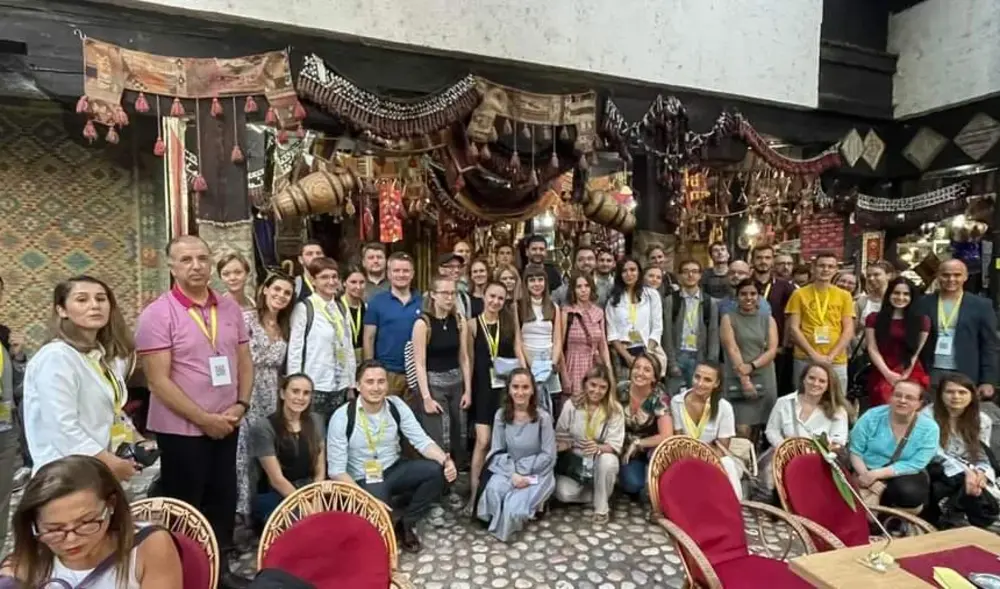‘Winter is Coming’: Understanding energy transition from The Energy Community Summer School

The 6th Summer School of the Energy Community Secretariat took place in Sarajevo, Bosnia and Herzegovina. This year’s topics were the challenges of energy transition and the complexities associated with it (scientific, legal, economic, cultural, political, and technical aspects). The event was co-organized with the Visegrad Fund, Friedrich-Ebert-Stiftung Dialogue Southeast Europe, and the University of Sarajevo – Faculty of Political Sciences.
About 45 participants from different geographical, educational and professional backgrounds attended this year’s summer school. Apart from the seminars and the theoretical aspects of the energy transition, we had the chance to visit a small hydropower plant Doljanka/ Jablanica and discuss with the local population the impact (ecological, social, economic) that such plants have on the community as well as a wind farm at Podvelezje (close to Mostar) while also exploring ways to tackle the climate crisis and energy poverty. As a student of the Willy Brandt School of Public Policy, the topics have been part of my master's thesis, and as such, I had the opportunity to share experiences and perspectives from my research.
One of the main messages of this year’s summer school was that ‘winter is coming’ and about to test the integrity not only of the European Union, but also the will of the countries that wish to join the union. This challenge and the policies addressing it were the main topics of the discussions. What’s more, the democratization of energy production, management, and environmental sustainability were also put forward.
‘Winter is Coming’ – No time for euphemisms, except for one!
With the war in Ukraine surging, and the gas supply coming from Russia being cut, this winter is expected to be hard. One of the main EU strategies EU is bringing countries together through Market Coupling of energy, which aims to establish a pan-European energy market of countries with different transmission system operators (TSOs). One of the projects used for that is the Price Coupling of Regions (PCR) which aims to create a price coupling solution used to calculate electricity prices across countries in Europe participating in the European Energy Exchange (EPEX SPOT). Arnold Weiss, Head of the Vienna Office of EPEX SPOT, introduced us to one of the main tools used by the European Energy Exchange, EUPHEMIA (EU + Pan-European Hybrid Electricity Market Integration Algorithm). The algorithm calculates energy allocation and electricity prices across Europe, by processing Network Data from TSOs (Net position ramping, Interconnection constraints, etc.), Orders (Hourly orders, Complex orders, etc.), and System Topology (Price limits, Network representation). The Price Coupling of Regions leads to the maximization of the overall welfare of participating countries and increases the transparency of the calculation of prices and energy flows.
Cap ou pas cap?
Another strategy that was discussed during the summer school was the price cap on gas. Something the European Union considered as a measure to counter Russia’s decision to halt gas flows towards Europe during their recent talks in Brussels, which eventually led to a division of the member states. One of the challenges for the adaption presented is that the price cap does not guarantee a decrease in consumption, which is currently one of the main goals of the EU in its aspiration towards energy security, but instead it will increase their demand for subsidies.
What is to be expected in the spring?
The current energy crisis shall not be seen as a setback towards global goals for energy transition, but rather as an opportunity. The oil crisis of the 70s led to a reconsideration of the energy policies at a global level and contributed to advances in energy alternatives such as nuclear and renewables. The coming winter can have a similar impact and help accelerate the energy transition. But what are the energy alternatives that can be considered beyond nuclear and renewable energy systems (RES) This was one of the questions brought to the participants during the debates. The main technology that is currently being considered the most viable alternative is hydrogen. While still in an embryonic stage when it comes to its marketing capabilities, hydrogen is one of the energy alternatives that is currently making its way towards global energy policies, with the EU adopting a Hydrogen Strategy in 2020; the G7 announcing their Hydrogen Action Pact in May 2022.
The crisis shall work as a reminder of the unsustainability of the current fossil fuel-dominated energy system. The EU is increasing its renewable energy and energy efficiency targets with the new plan ‘REPowerEU’. In August, the US government enacted the Inflation Reduction Act, promoting the deployment of RES, electric vehicles, carbon capture, and hydrogen. The world’s largest economies are pushing for clean energy, which is a good reason to be optimistic that more policies that support this cause will follow.

Armando Guçe is a graduate student at the WBS. His research focuses on the political economy of energy transition in the Western Balkans.
~ The views represented in this blog post do not necessarily represent those of the Brandt School. ~